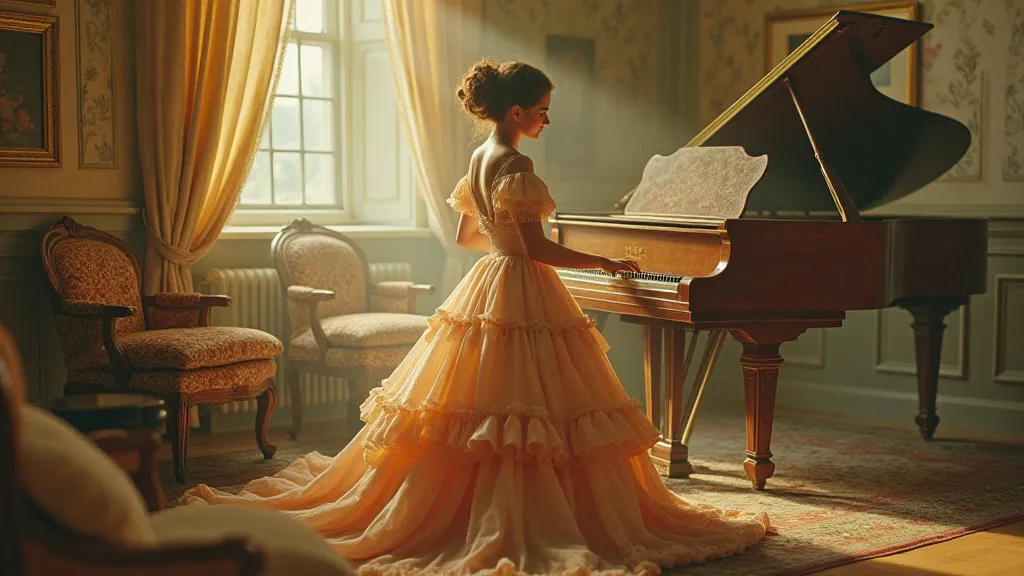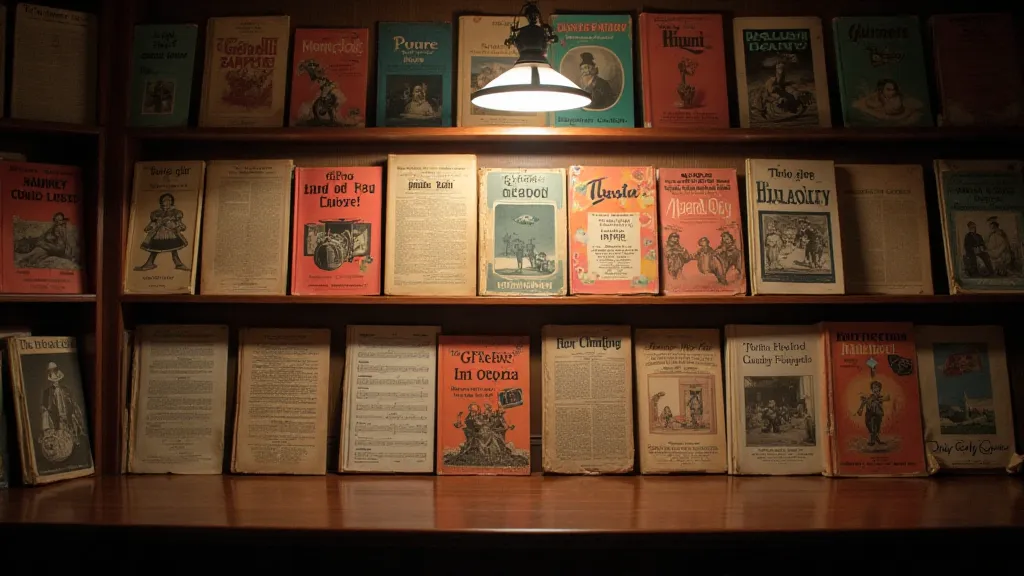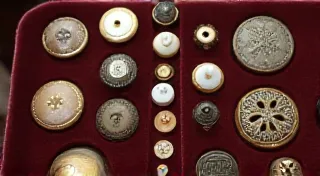Chromatic Cartography: Mapping Musical Taste Through Sheet Music Eras
The brittle paper whispers secrets. Each crease, each faded ink stain, is a tiny portal to another time. Collecting vintage sheet music isn't merely amassing paper; it's charting a landscape of shifting tastes, evolving musical styles, and the relentless march of history. It’s a chromatic cartography, mapping the soul of generations through the melodies they cherished.
My own fascination began, unexpectedly, with an antique accordion. It wasn’t particularly valuable, just a humble instrument rescued from a dusty attic. But the sheet music tucked inside – tattered waltzes and jaunty ragtime tunes – sparked a curiosity that has grown into a lifelong passion. It wasn’t just about the music itself, though the charm of those forgotten melodies is undeniable. It was about the people who played them, who sang along, who found joy and solace within those printed notes. Understanding how that sheet music was presented and maintained, and how those aspects influenced its preservation, is fascinating. Indeed, a deeper look into a spectrum of binding techniques and the impact of various presentation styles can greatly enrich the collector’s experience.
The Rise of the Salon Era (1880s – 1910s): A Portrait of Refinement
The late 19th century and early 20th century witnessed a boom in sheet music publishing. The rise of the middle class meant more families could afford pianos, and playing music became a vital form of entertainment and social engagement. Sheet music wasn’t just for professionals; it was for everyone. Homes hosted elaborate “salon” evenings, filled with the strains of waltzes, polkas, and Viennese operettas. The covers of these sheet music treasures often showcased stunning illustrations – elaborate portraits of singers, scenes from popular plays, and even depictions of fashionable interiors. The lithography was exceptional, often employing multiple colors and intricate details. A simple waltz could be a work of art in itself.

Examining these collections reveals a deep appreciation for romanticism and formality. The music was carefully chosen to create an atmosphere of elegance and sophistication. Composers like Johann Strauss Jr. and Franz Lehar were immensely popular, and their works were ubiquitous. The societal context of this era is fascinating to explore. These musical traditions and the associated social gatherings often dictated not only the music played but also the decor, dress codes, and even the conversations held – creating an immersive cultural experience. The preservation of these traditions is key to understanding the aesthetic and social values of the time. Furthermore, thinking about the fragility of these beautiful artifacts—knowing how easily they can deteriorate—encourages thoughtful handling and long-term preservation strategies. In fact, pondering ink stains and echoes – the stories whispered from the paper itself – adds a rich dimension to the collecting experience.
The Roaring Twenties & the Jazz Age (1920s – 1930s): A Shift in Tempo
The aftermath of World War I brought a dramatic shift in cultural norms, reflected vividly in the sheet music of the 1920s. The rigid formality of the Salon Era gave way to a new exuberance, a loosening of the reins. The Charleston, the Foxtrot, and the increasingly popular Jazz songs dominated the charts. The artwork on sheet music covers became bolder, more modern, and often featured flapper girls in daringly short dresses – a stark contrast to the demure portraits of the previous era.
The craftsmanship in this period remains impressive. The printing techniques were evolving, allowing for more complex designs and brighter colors. You're beginning to see a greater emphasis on graphic design, with the layout and typography contributing significantly to the overall aesthetic appeal. Many covers utilized Art Deco influences, with geometric patterns and stylized imagery. The emergence of jazz music brought with it a new spirit of improvisation and individual expression, and the sheet music reflected that freedom. These musical documents weren't just vessels for notes; they served as tangible records of evolving copyright laws and the impact of publishers. The interplay between musical innovation and the legal frameworks that governed its distribution provides a compelling narrative of the era’s creative and commercial landscape. Looking at these early documents reveals much about the unsung voices of the copyright page and their influence on the music industry.
One interesting quirk I'd noticed while poring through collections from this era is the prevalence of “parlor songs” - often sentimental ballads meant for amateur singers, often telling stories of lost love or homesickness. These offer a fascinating glimpse into the emotional landscape of the time. Considering the social and economic conditions of the time – the post-war anxieties, the rapid urbanization – helps to contextualize the themes explored in these songs. The longing for simpler times, the search for connection in a rapidly changing world, resonated deeply with audiences and helped to shape the cultural identity of the era.
The Big Band Era and World War II (1930s – 1940s): Music for a Nation at War
The 1930s brought the Great Depression, but the music industry persevered, offering a much-needed source of entertainment and escapism. The rise of swing music and the Big Band era dominated the scene. Bands like Glenn Miller, Benny Goodman, and Duke Ellington achieved unparalleled popularity, and their sheet music flew off the shelves. The covers often featured glamorous photographs of bandleaders and singers, reinforcing the allure of the music. Music, in this period, served as more than just entertainment; it became a vital tool for maintaining morale and fostering a sense of unity during challenging times.
World War II had a profound impact on the music industry. Patriotic songs and morale boosters became essential, and sheet music was widely distributed to soldiers and civilians alike. The covers often depicted scenes of wartime heroism or featured slogans promoting unity and sacrifice. The paper quality, however, began to suffer due to wartime rationing; it’s often thinner and more prone to damage. Beyond the immediate musical impact, there's a subtle, yet perceptible shift in the rhythmic complexity and overall tempo. The intersection of artistic expression and national duty created a unique and compelling chapter in musical history. The enduring power of these musical artifacts serves as a testament to the resilience of the human spirit and the unifying force of music. Observing this evolution, the dedicated collector will be keen to track the metronome’s quiet witness to these shifts in musical eras, providing invaluable context to the historical narrative.

Post-War Era and Beyond (1950s – Present): A Landscape of Diversity
The post-war era brought a new wave of musical innovation, with the rise of rock and roll, pop, and other genres. Sheet music publishing continued, but the format began to change. The covers became less elaborate, and the focus shifted to functionality rather than artistry. The rise of recordings and radio diminished the dominance of sheet music, but it never disappeared entirely.
Collecting vintage sheet music isn't just about acquiring beautiful artifacts; it's about connecting with the past, understanding the evolution of musical taste, and appreciating the artistry of those who created and played the music. Each piece tells a story – a story of a time, a place, and a people who found joy and comfort in the melodies they cherished. The paper itself carries echoes of laughter, tears, and shared experiences. Examining the gradual decline in sheet music’s prominence alongside the burgeoning popularity of recorded music reveals a fascinating transition in how people consumed and engaged with music. The shift also prompted changes in music education, impacting the role of sheet music in learning and performance.
Restoration can be tricky. Gentle cleaning with a soft brush and acid-free paper is usually sufficient for minor surface dirt. Avoid using water or harsh chemicals, as they can damage the paper irreparably. Proper storage—in a cool, dry, and dark environment—is the best way to preserve these fragile treasures for future generations. This careful preservation isn't simply about aesthetics; it's about safeguarding a vital part of our cultural heritage.
Finding these treasures can be surprisingly accessible. Antique shops, flea markets, and online auctions are all fertile grounds for discovery. And while some pristine copies can command high prices, many beautiful and historically significant pieces can be acquired at reasonable costs. It’s a journey of exploration and discovery, a chance to chart your own chromatic cartography of musical history. Many collectors find immense satisfaction not only in acquiring these pieces but also in sharing their knowledge and passion with others, contributing to a growing appreciation for the art and history of sheet music.






